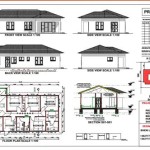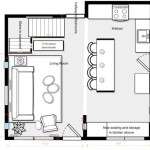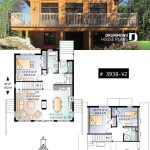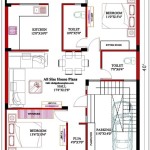Antique New England Colonial House Plans: A Historical Architectural Guide
Antique New England Colonial house plans represent a significant chapter in American architectural history. Originating in the 17th century, these homes reflect the building traditions brought by European settlers and adapted to the New England climate and available resources. Understanding these plans involves delving into their distinct characteristics, variations, and the socio-economic factors that shaped their development. This article provides a comprehensive overview of antique New England Colonial house plans, exploring their key features and enduring appeal.
Understanding the Historical Context
The Colonial period in New England spanned from the early 1600s to the late 1700s, witnessing a gradual evolution in architectural styles. Early settlers, primarily from England, initially built simple, functional structures reminiscent of their homes overseas. However, as communities grew and prospered, architectural styles became more refined, incorporating elements from various European influences. The availability of timber, coupled with the harsh New England climate, significantly influenced the design and construction of these homes.
The earliest colonial homes were often small, single-room dwellings, gradually expanding over time as families grew and resources allowed. The focus was on practicality and durability, with simple floor plans and minimal ornamentation. As towns developed and trade flourished, houses became larger and more elaborate, reflecting the increasing wealth and social status of their occupants. The evolution of these homes provides valuable insights into the cultural and economic landscape of early New England.
The architectural style was also influenced by the prevalent social structure. Wealthier families often employed skilled craftsmen who brought with them knowledge of European architectural trends. This led to the incorporation of more sophisticated design elements, such as symmetrical facades, decorative moldings, and more spacious layouts. Conversely, simpler homes, built by farmers and tradespeople, retained a more functional and unadorned appearance.
Key Characteristics of New England Colonial House Plans
Several distinct features define antique New England Colonial house plans. These characteristics reflect both the practical needs of the settlers and the evolving aesthetic preferences of the time. Understanding these features is crucial for identifying and appreciating the architectural significance of these homes.
One of the most defining characteristics is the symmetrical facade. This reflects the influence of Georgian architecture, which became popular in the colonies during the 18th century. The front of the house typically features a central entrance door flanked by an equal number of windows on either side. This symmetry extends to the roofline, which is usually a simple gable or gambrel shape.
The central chimney is another common characteristic. This design element served a practical purpose, providing heat to multiple rooms and minimizing the risk of fire. The chimney was often constructed of brick or stone and was a prominent feature of the house's exterior. The placement of the chimney also influenced the interior layout, with rooms arranged around it for efficient heating.
Interior layouts typically feature a central hallway with rooms on either side. The first floor often included a parlor, a dining room, and a kitchen. Bedrooms were located on the second floor. Early colonial homes might have had smaller rooms and simpler layouts, while later, more elaborate homes featured larger, more defined spaces. The use of paneling, wainscoting, and decorative moldings added to the interior's visual appeal.
Building materials were largely dictated by the availability of local resources. Timber was abundant in New England, so wood framing was the primary construction method. Clapboard siding was commonly used to protect the exterior from the harsh weather. Stone foundations provided a stable base for the house. As brick production increased, it was used for chimneys and, in some cases, for the entire house.
Windows were typically small and multi-paned, reflecting the limitations of glass production at the time. Double-hung windows became increasingly popular during the later colonial period. The size and placement of windows were also influenced by the desire to maximize natural light while minimizing heat loss during the cold New England winters.
Variations and Sub-Styles Within New England Colonial Architecture
While sharing common characteristics, antique New England Colonial house plans encompass a variety of sub-styles and regional variations. These differences reflect the diverse cultural influences and local building traditions that shaped the architectural landscape of the region.
The Cape Cod style is a classic example of a simplified Colonial design. These homes are typically one or one-and-a-half stories high, with a low-pitched roof and a central chimney. Cape Cod houses are characterized by their compact size and functional layout, making them well-suited to the harsh New England climate. The style originated on Cape Cod, Massachusetts, and became popular throughout the region.
The Saltbox style is another distinctive variation. These homes are characterized by their asymmetrical roofline, with a long, sloping rear roof that extends down to the first floor. This design provided additional living space while also offering protection from the wind and snow. The Saltbox style is believed to have originated from the need to add space to existing homes without incurring additional taxes, as the number of stories facing the street was often taxed.
Georgian Colonial architecture represents a more refined and elaborate expression of the Colonial style. These homes are characterized by their symmetrical facades, elaborate detailing, and larger size. Georgian architecture became popular in the 18th century and reflected the increasing wealth and sophistication of the colonies. Key features include pediments over doorways, decorative cornices, and symmetrically arranged windows.
The influence of Dutch Colonial architecture can be seen in some parts of New England, particularly in areas with a strong Dutch heritage. These homes are characterized by their gambrel roofs, which feature a double slope on each side. Dutch Colonial houses often have wide eaves and dormers, adding to their distinctive appearance. The style reflects the architectural traditions brought by Dutch settlers to the New World.
Regional variations also existed within these sub-styles. For example, the use of specific building materials and decorative elements varied depending on the availability of local resources and the preferences of local builders. In some areas, stone was more commonly used for foundations and walls, while in others, wood was the predominant material. These regional differences add to the richness and diversity of New England Colonial architecture.
The preservation and restoration of antique New England Colonial homes are essential for maintaining the architectural heritage of the region. These homes offer a tangible link to the past and provide valuable insights into the lives and culture of early American settlers. By understanding the key characteristics and variations of these homes, it is possible to appreciate their historical significance and ensure their preservation for future generations.

New England Colonial House Plans Monster

Vintage House Plans This Week We Are Looking At New England Salt Box Style Homes On Th Colonial

Vintage House Plans 1970s New England Gambrel Roof Homes Colonial

Vintage House Plans 1970s Homes New England Salt Box Design A 1763 Saltboxshedplans With Pictures Colonial

Vintage House Plans Gambrel Roof 1970s

1949 Ranch Style Homes From National Plan Service And Antiquehome Org In 2024 Vintage House Plans Floor

Colonial House Plans Dutch Modern More Monster

Cape Early New England Homes

1930s Real Estate Vintage Home Floor Plans The Inn

My New Obsession Vintage House Plans Aimee S Victorian Armoire








